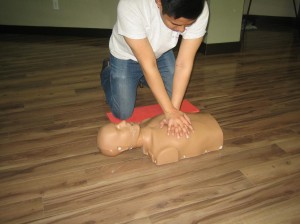
Honolulu CPR in Honolulu, Hawaii is the prime source for CPR and first aid training in the state. There are a variety of courses offered at Honolulu CPR, focused on basic and advanced CPR and first aid. We have eight training courses in total, all taught by trainers who are certified themselves – this means that our students are taught the latest skills and techniques in CPR and first aid.
Signing up for our programs is quite easy; the Honolulu CPR website has an online form that can be filled out at any time of the day. Other ways to sign up are through e-mail, telephone call, and in person. E-mails can be sent at any time of the day as well, but calls and visits in person can only be done during business hours.
Heart attacks and strenuous activities
While cardiovascular conditions are a long time coming, heart attacks are as sudden as they are severe. Heart attacks happen when the blood flow to the heart is suddenly cut off. This can be caused by a sudden obstruction or constriction of the coronary arteries. When a person undergoes great amounts of stress, it causes the release of a hormone – adrenalin – which causes the vessels in the body to constrict, thereby raising the blood pressure. If a vessel already has a blockage, the vasoconstriction can cut off the blood supply through that vessel entirely.
Stress can be caused by a number of reasons, such as periods of high emotion and an increase in physical activity. If the body cannot compensate for the high stress period, the blood pressure will continue to rise and can cause a heart attack.
Cardiac arrest
The term cardiac arrest is used to describe a heart that has stopped beating. This is usually the end point after a severe heart attack. In order to get the heart to start beating again, CPR is performed. CPR is made up of three skills – compressions, ventilations, and defibrillation. For a bystander rescuer, only the first two skills are commonly used, since the third needs an AED (defibrillator) in order to be performed.
Compressions are given by pressing hard and fast in the middle of the chest, along the nipple line (space between the nipples). The rescuers have to allow the chest to recoil before another compression is given, or else the heart will not have enough time to fill up with blood before another compression makes forces blood to circulate through the body. When giving compressions, the general rule is to allow the chest to be compressed by a third of its anterior-posterior ratio. In adults, this is at least 2 inches and approximately 1.5 inches in infants and toddlers.
Ventilations are given by opening the mouth (thrusting the jaw down) and tilting the head back. Like compressions, the chest has to rise and fall between breaths.
